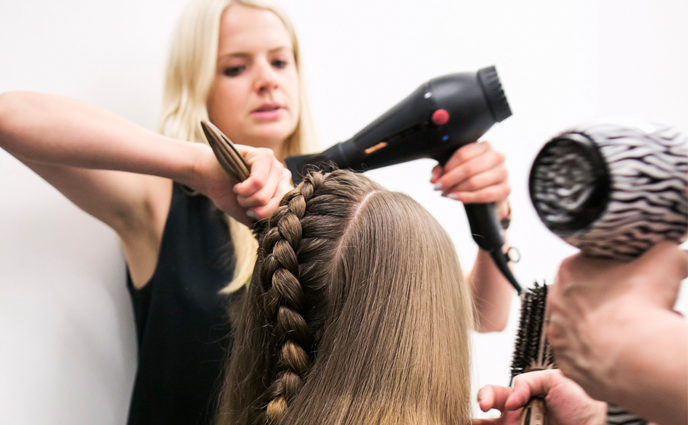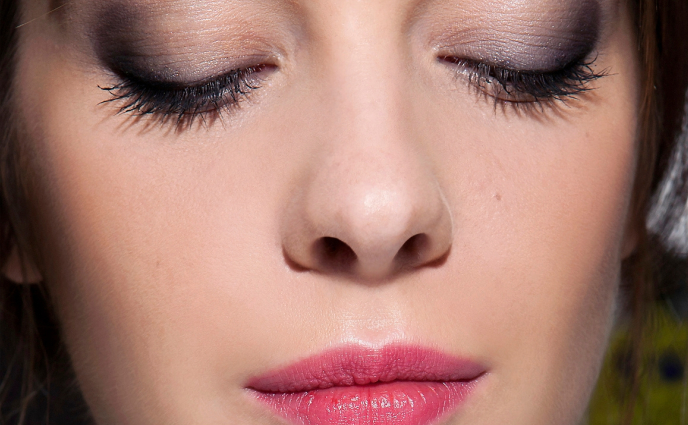A word on color: According to Blair, "The closer the product is to your skin tone, the more natural it looks." That goes for reds, pinks, oranges, nudes and everything in between. For example, if your skin has warm undertones, like yellows or reds, a warm-toned, rosey-pink lipstick will look more natural than a bluer pink -- and vice-versa for someone with cool-toned skin.
So, if you're concerned that a certain color will look too bold, opt for a shade with undertones that match your skin.
"Wearing a lot of eye makeup with a bold lipstick can be too much," King says. "When wearing a bold lip color, try to minimize your eyes."
To strike the ideal eyes-lips balance, King recommends applying your lipstick first, then your eye makeup. This way, it becomes much easier to tell when enough eye makeup is enough, she says.
Our makeup artists agree: Anyone can pull off any color -- as long as they are comfortable with it. Despite any guidelines about undertones, the ultimate rule is this: "It's not about what you wear, it's how you wear it."
Blair, Smith and King all say that the No. 1 misconception women have about lipstick is that they can't wear bright colors. "It may take some getting used to if it's new for you, but bright lipstick is fun," says Smith. "It wakes up your entire face and mood."
King adds that many women are especially afraid of red. "Red looks good on all women," she promises. "Just not every woman feels confident enough to wear it."
Our artists recommend experimenting: "Try different shades," says Smith, "and there's always makeup remover if you don't like it."
But odds are you will. Sure, the same color won't look identical on everyone, but if it matches your outfit, your personality, your mood, the rules don't matter. It's lipstick, after all, not war. The more open-minded you are, the more fun it will be.






